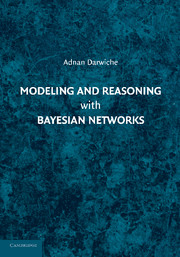Refine search
Actions for selected content:
48202 results in Computer Science
Soundscape Elements in the Music of Denis Smalley: negotiating the abstract and the mimetic
-
- Journal:
- Organised Sound / Volume 16 / Issue 1 / April 2011
- Published online by Cambridge University Press:
- 25 February 2011, pp. 54-62
- Print publication:
- April 2011
-
- Article
- Export citation
Sound and movie examples – issue 16(1)
-
- Journal:
- Organised Sound / Volume 16 / Issue 1 / April 2011
- Published online by Cambridge University Press:
- 25 February 2011, pp. 91-92
- Print publication:
- April 2011
-
- Article
- Export citation
Transgressive Sound Surrogacy
-
- Journal:
- Organised Sound / Volume 16 / Issue 1 / April 2011
- Published online by Cambridge University Press:
- 25 February 2011, pp. 27-35
- Print publication:
- April 2011
-
- Article
- Export citation
OSO volume 16 issue 1 Cover and Front matter
-
- Journal:
- Organised Sound / Volume 16 / Issue 1 / April 2011
- Published online by Cambridge University Press:
- 25 February 2011, pp. f1-f2
- Print publication:
- April 2011
-
- Article
-
- You have access
- Export citation
Editorial
-
- Journal:
- Organised Sound / Volume 16 / Issue 1 / April 2011
- Published online by Cambridge University Press:
- 25 February 2011, pp. 1-4
- Print publication:
- April 2011
-
- Article
-
- You have access
- HTML
- Export citation
Petri Kuljuntausta, First Wave: A Microhistory of Early Finnish Electronic Music. Jyväskylä: Like, 2008. 443 pp. ISBN 978-952-01-0235-7. Available from www.like.fi.
-
- Journal:
- Organised Sound / Volume 16 / Issue 1 / April 2011
- Published online by Cambridge University Press:
- 25 February 2011, pp. 89-90
- Print publication:
- April 2011
-
- Article
- Export citation
From Sound Shapes to Space-Form: investigating the relationships between Smalley's writings and works
-
- Journal:
- Organised Sound / Volume 16 / Issue 1 / April 2011
- Published online by Cambridge University Press:
- 25 February 2011, pp. 42-53
- Print publication:
- April 2011
-
- Article
- Export citation
Temporal Associations, Semantic Content and Source Bonding
-
- Journal:
- Organised Sound / Volume 16 / Issue 1 / April 2011
- Published online by Cambridge University Press:
- 25 February 2011, pp. 63-68
- Print publication:
- April 2011
-
- Article
- Export citation
Textons and the Propagation of Space in Acousmatic Music
-
- Journal:
- Organised Sound / Volume 16 / Issue 1 / April 2011
- Published online by Cambridge University Press:
- 25 February 2011, pp. 14-26
- Print publication:
- April 2011
-
- Article
- Export citation
Extra-Musical Meanings and Spectromorphology
-
- Journal:
- Organised Sound / Volume 16 / Issue 1 / April 2011
- Published online by Cambridge University Press:
- 25 February 2011, pp. 36-41
- Print publication:
- April 2011
-
- Article
- Export citation
Music Composition as an Act of Cognition: ENACTIV – interactive multi-modal composing system
-
- Journal:
- Organised Sound / Volume 16 / Issue 1 / April 2011
- Published online by Cambridge University Press:
- 25 February 2011, pp. 69-86
- Print publication:
- April 2011
-
- Article
- Export citation
The Visual Sound-Shapes of Spectromorphology: an illustrative guide to composition
-
- Journal:
- Organised Sound / Volume 16 / Issue 1 / April 2011
- Published online by Cambridge University Press:
- 25 February 2011, pp. 5-13
- Print publication:
- April 2011
-
- Article
- Export citation
OSO volume 16 issue 1 Cover and Back matter
-
- Journal:
- Organised Sound / Volume 16 / Issue 1 / April 2011
- Published online by Cambridge University Press:
- 25 February 2011, pp. b1-b4
- Print publication:
- April 2011
-
- Article
-
- You have access
- Export citation
The Hough transform
-
- Journal:
- Journal of Functional Programming / Volume 21 / Issue 2 / March 2011
- Published online by Cambridge University Press:
- 24 February 2011, pp. 129-133
-
- Article
-
- You have access
- Export citation
A FORMALIZATION OF KANT’S TRANSCENDENTAL LOGIC
-
- Journal:
- The Review of Symbolic Logic / Volume 4 / Issue 2 / June 2011
- Published online by Cambridge University Press:
- 24 February 2011, pp. 254-289
- Print publication:
- June 2011
-
- Article
- Export citation

Modeling and Reasoning with Bayesian Networks
-
- Published online:
- 23 February 2011
- Print publication:
- 06 April 2009
Abstract answer set solvers with backjumping and learning
-
- Journal:
- Theory and Practice of Logic Programming / Volume 11 / Issue 2-3 / March 2011
- Published online by Cambridge University Press:
- 22 February 2011, pp. 135-169
-
- Article
- Export citation
Negative Dependence and Srinivasan's Sampling Process
-
- Journal:
- Combinatorics, Probability and Computing / Volume 20 / Issue 3 / May 2011
- Published online by Cambridge University Press:
- 22 February 2011, pp. 347-361
-
- Article
- Export citation
